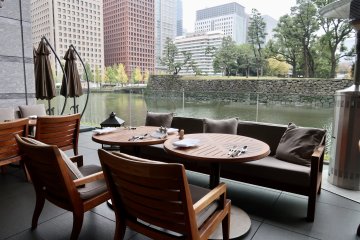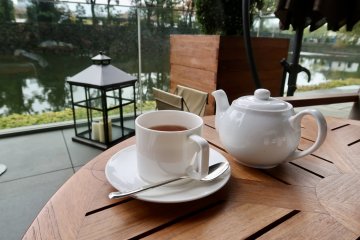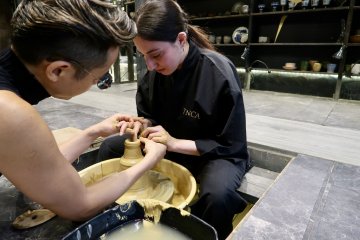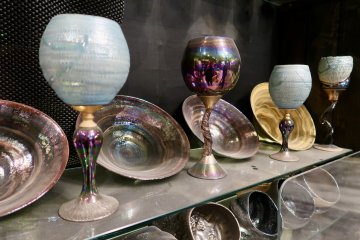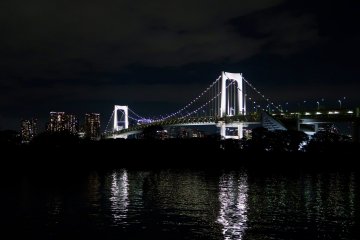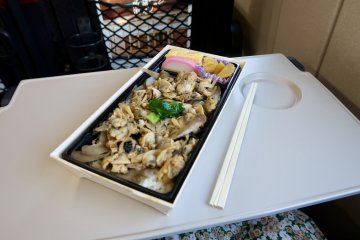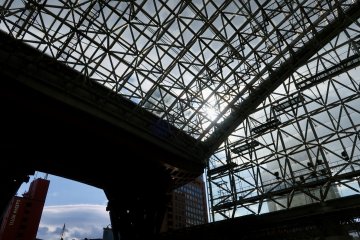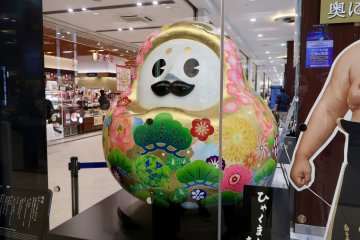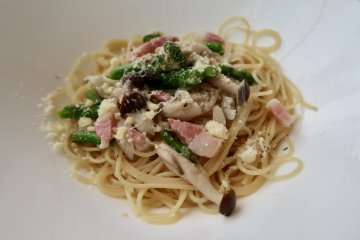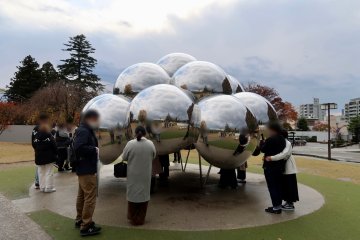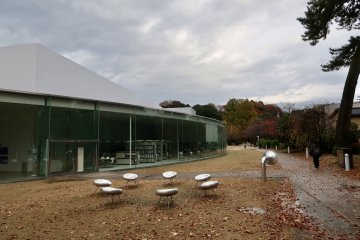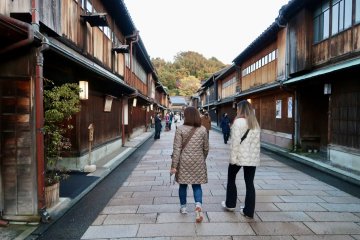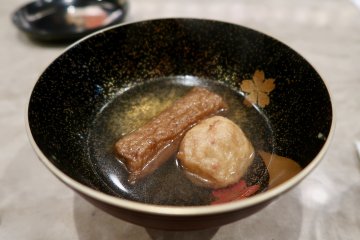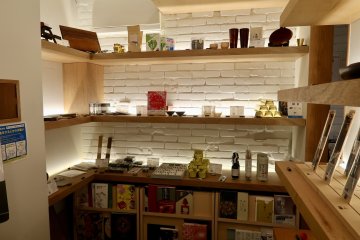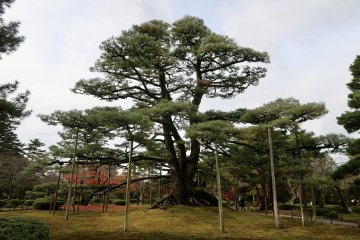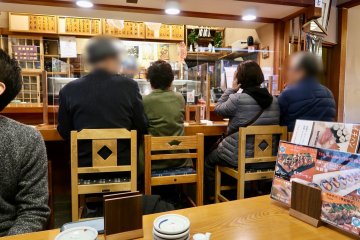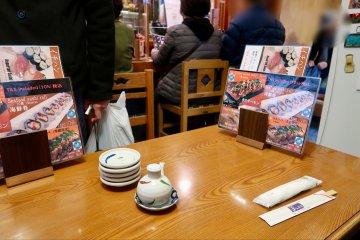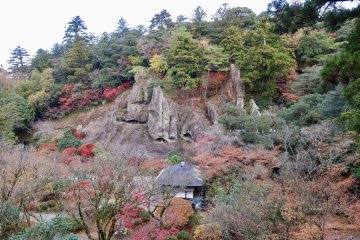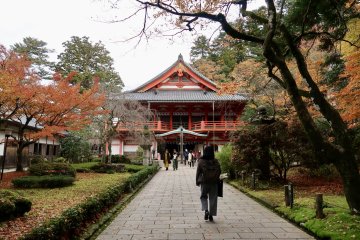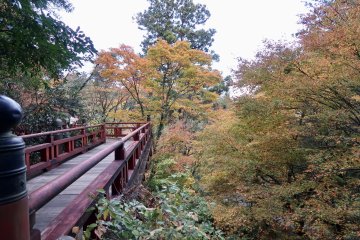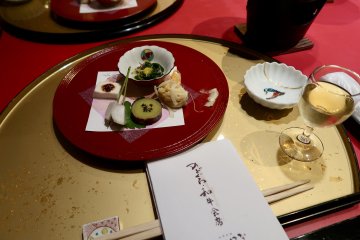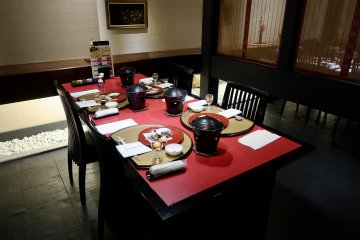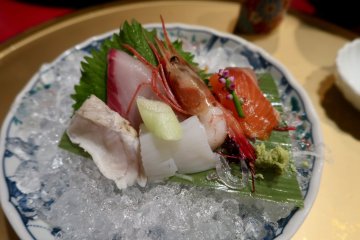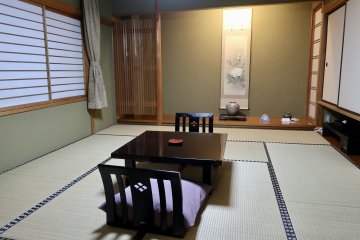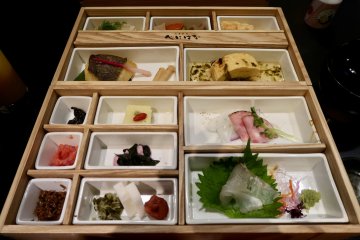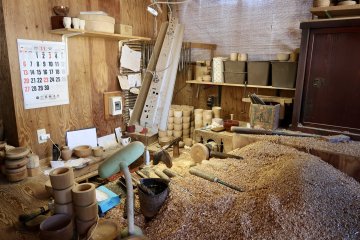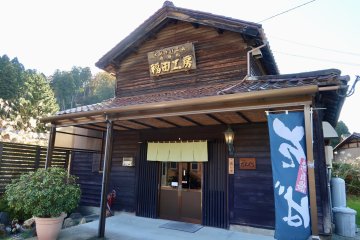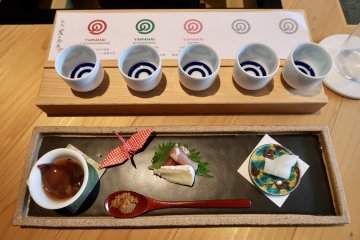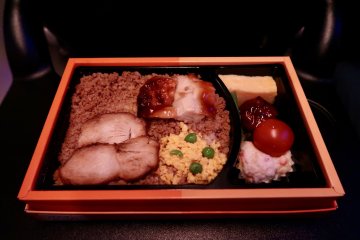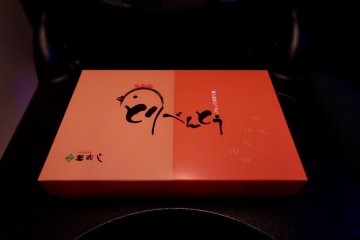Despite the modern age, Japan has long been renowned for its preserved history. Even in Tokyo, a beacon of Japan’s modernity, you can still walk beside centuries old structures and explore traditional methods that have been passed down for generations. Ishikawa, situated on Japan’s western border along the Sea of Japan, carries on this heritage as well with its crafts, museums, artisans, and natural beauty.
Journey with me through Tokyo and Ishikawa’s preserved charm, and immerse yourself in Japan’s rich traditions!
Day 1 - Tokyo
Imperial Palace

Majestic bridges, stone moat walls, and distant watchtowers greeted me as I entered the Imperial Palace’s Kokyo Gaien National Garden. Located in the heart of the city, this palace—the former site of Edo Castle—stands as a reminder of the country’s feudal past when shogun (military dictators), daimyo (feudal lords), and samurai reigned supreme. Today, much of the palace grounds have been converted into parks. Even so, the atmosphere of the past still lingers.

In the Kokyo Gaien National Garden, I admired thousands of black pine trees, an impressive bronze samurai statue, and two of the country’s most recognizable bridges—a stone bridge and an iron bridge, which is more commonly known by its nickname Nijubashi.

Afterwards, I explored the East Gardens of the Imperial Palace where I stepped even closer to the past and walked among beautifully sculpted Japanese gardens. Despite the surrounding cityscape, I felt as though I was walking in the Edo period.
Lunch at Palace Hotel Tokyo

After following the shadows of past samurai, I returned to the present with lunch at the Grand Kitchen in the Palace Hotel Tokyo—a hotel located on the eastern side of the Imperial Palace. The staff seated me at an outdoor terrace table, and I was treated to magnificent views of the palace’s moat and greenery against the encircling high-rises.

For my entree, I chose the fish of the day. While snuggled in a restaurant-provided blanket, I enjoyed bread and olive oil, creamy onion soup garnished with croutons and fried onions, a tuna filet with tomato sauce and roasted vegetables, and a fusion dessert of shiratama rice cakes, sweet red beans, coffee jelly, and black sesame panna cotta. I ended the meal with a steaming cup of tea, which perfectly complemented the crisp air and rainy scenery.
Pottery Making at Taku Nakano CeramicArts☆

When I finished lunch, the rain had cleared, and I was ready to try my hand at pottery! From Otemachi Station, which was near restaurant, I took the Tokyo Metro Hanzomon Line to Omote-sando Station (about 15 minutes) and then walked an additional five minutes to Taku Nakano CeramicArts☆ for a pottery workshop. The shop’s interior shined with beautifully crafted glasswork, ceramics, and pottery, and the instructor welcomed me with a smile. Upon arrival, I changed into a samue, traditional Japanese work clothing, and then sat beside the pottery wheel as the instructor gave me some basic instructions.

Soon, it was my turn to sit behind the wheel. Although the slippery clay was difficult to mold at times, the instructor patiently guided me every step of the way. After about two hours of intense concentration, I was left clay-splattered with two bowls, a small vase, and a traditional tea cup. I chose colors for my creations and left them with the facility to finish. Generally, it takes about one month for the facility to finish the pottery pieces and ship them to participants. I look forward to seeing my art!
Yakatabune Cruise

After a short rest at my hotel, I traveled to Kuramae Station via the Toei Oedo Line and then walked about five minutes to the Umayabashi boarding area. My activity for the night—a dinner cruise on the Sumida River in a yakatabune boat! This traditional boat had a first floor dining area with tatami floors and large windows, an open-air second floor, and a lantern-adorned exterior.

Once I settled in my seat, the jovial staff brought out stewed pork, crab legs, sashimi, fresh fish and vegetable tempura, rice with clams, miso soup, and a sweet treat for dessert. As I dined on the savory flavors, the boat cruised under more than a dozen illuminated bridges, and I was even able to spot Tokyo Tower between the skyscrapers! During the romantic ride, the boat stopped in Odaiba and in front of Tokyo SKYTREE. During these instances, the passengers and I rushed outside. I inhaled the refreshing night air and gazed wide-eyed at the display of urban beauty.

Twinkling city lights and passing boats reflected in the black water like an abstract painting. Iconic sights such as Odaiba, the Rainbow Bridge, and Tokyo SKYTREE felt born anew as I viewed them from the river. The entire experience, from the bright dining inside to the alluring mystery of the night, was magical.
Day 2 - Ishikawa
Shinkansen Time—Tokyo Station to Kanazawa Station

My morning started at Tokyo Station. For breakfast, I grabbed a warm green tea from a vending machine and purchased a bento box to enjoy on my ride. My train for the day was the Shinkansen "Kagayaki." This high-speed train runs along the Hokuriku Shinkansen line and is the fastest train service to Kanazawa, Ishikawa at roughly two hours and 30 minutes.

After I settled in my train seat by the window, I was off! The seat was comfortable, and, thanks to the roomy legroom, I was able to easily store my luggage beside me. I quickly opened my bento, called Fukagawameshi, and dove into the cute boxed meal, which featured soy sauce-flavored clams over rice. The salty flavors complimented the neutral rice perfectly. After the meal, I turned my gaze to the passing scenery and watched as the highrises gave way to residential areas, mountains, and nature. As we approached Ishikawa, I could even see the Sea of Japan!
Kanazawa Station

After the visually immersive train ride, I arrived at Kanazawa Station, which is recognized as one of the most beautiful train stations in the world! As I entered the main hub of the station, I admired the facility’s unique columns, which were decorated with visual representations and descriptions of the 36 Designated Traditional Crafts of Ishikawa. At the tourist information counter, I purchased a one-day bus pass and used the station’s 700 yen luggage service to transfer my belongings to my accommodation for the night. Next, I moved to the East Exit where the station’s iconic Tsuzumimon Gate greeted me.

Named after its resemblance to the traditional tsuzumi drum, the wooden structure is made up of intersecting wooden beams and connected to the station’s glass ceiling—called the Motenashi Dome. I craned my neck towards the sky and marveled at the contrasting designs of modernity and tradition.
Lunch at Fusion21

From Kanazawa Station, I boarded a bus for the 21st Century Museum of Contemporary Art, Kanazawa—about a 15-minute ride—to have lunch at the facility’s onsite restaurant, Fusion21. The restaurant itself is located just past the museum’s entrance. The eatery’s bright dining space epitomized minimalism with its white color scheme and massive floor to ceiling windows and offered views of the museum’s front greenspace.

For lunch, the restaurant offered pasta, rice, fish, and meat options, as well as access to a buffet. I chose oil pasta with pancetta and mushrooms, and picked up some salad, corn soup, fried shrimp, glazed sweet potatoes, and soba as appetizers from the buffet. The variety of flavors and textures took my taste buds on a culinary journey and after the satisfying meal, I was ready to explore the museum.
21st Century Museum of Contemporary Art, Kanazawa

The museum, from its design to its exhibits, was truly a celebration of art. As I walked around the perimeter of the circular facility, I enjoyed thought-provoking sculptures that played with colors, materials, and forms; about a hundred varieties of trees; and even a traditional teahouse! Inside, my artistic adventure continued with contemporary exhibits that were both visually and mentally intriguing. Thanks to the English descriptions, I was able to fully enjoy everything!

One of my favorite exhibits was The Swimming Pool by Leandro Erlich—a life-sized pool and interactive optical illusion that guests can both view from above and enter! Of course, I had to enter. Inside, I watched the distorted faces of museum-goers look down at me, and above, it felt as though I was viewing people underwater. I ended my visit at the Blue Planet Sky by James Turrell. The focal point of this empty room was a large square hole in the ceiling. I took a seat on a bench along the room’s perimeter and felt my mind relax as I watched the passing clouds.
Gold Leaf Experience at Gold Leaf Sakuda in Higashi Chaya District
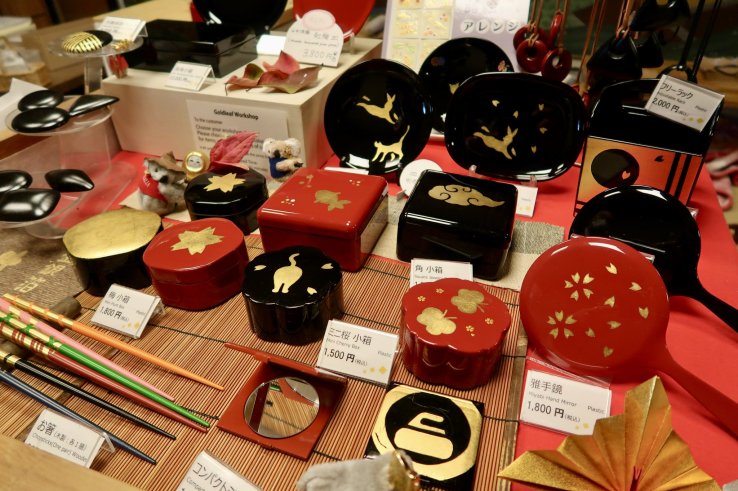
After exploring contemporary art, I returned to tradition with a gold leaf workshop at Gold Leaf Sakuda! The class began with a brief description of the process of melting, shaping, and flattening gold, and I was shocked to hear that Kanazawa produces 99 percent of gold leaf used in Japan! After the explanation, I turned my eyes to a veteran artisan cutting gold leaf. Her fluid movements were hypnotizing and highlighted her years of mastering the craft.

Next, it was time for me to create my own gold leaf souvenir. From the store’s collection of plates, chopsticks, boxes, and mirrors, I chose a small box shaped like a cherry blossom and opted for a cat design with flowers. After adding the design to my box’s lid, I applied the gold leaf and was left with a souvenir box that embodied my experience.
Higashi Chaya District

About a five-minute walk from the gold leaf shop was the renowned Higashi Chaya District. Instantly, I felt as though I was transported to the Edo period. With stone walkways at my feet, I walked beside beautifully preserved wooden chaya, or tea houses. In the past, this area served as a bustling entertainment district where geisha thrived.

Today, many of these buildings have been converted into shops and cafes, and only 11 geisha still work in the area. Even so, the alluring vibe of the past was mesmerizing and offered a tangible snapshot of the past.
CRAFEAT

After journeying through Kanazawa’s arts, crafts, and traditional charm, I was ready for some dinner. My stop for the night—CRAFEAT, an oden restaurant. Oden is a dashi-broth based dish filled with a variety of ingredients. Upon entering the restaurant, I was encircled in a welcoming atmosphere of wooden accents and relaxing music and seated at a bar overlooking part of the kitchen.

Each dish was served on beautiful Wajima lacquerware as the shop’s owner is also the tenth generation owner of a lacquerware company! The multi-course meal featured multiple flavors, including potato salad, blowfish and seaweed soup, and lotus root pickles. The star of the meal, of course, was the oden. In the light, savory broth I enjoyed fried tofu, konjac, fish cake, gluten, hard boiled eggs, and more. The artfully plated and flavorful meal was the perfect way to end my day in Kanazawa.
Day 3 - Ishikawa
Kenrokuen Garden

I started my morning at Kenrokuen Garden—one of the three most beautiful landscape gardens in Japan! Directly translated, Kenrokuen means “combination,” “six,” “garden,” and refers to six attributes that, according to ancient Chinese techniques, create the perfect garden.

The moment I entered the garden, I was entranced by the sculpted grounds. Hundreds of cherry, pine, plum, and maple trees stood on the banks of ponds and streams. With the melody of running water in the background, I followed autumn leaf-strewn paths through landscaped foliage and moss-covered stone lanterns. Gentle wind ruffled the trees, causing colorful leaves to tumble like rainfall.

Although manmade, the garden respected and highlighted the beauty of nature. I look forward to returning one day to experience Kenrokuen in all seasons.
Kourin Sushi

From Kenrokuen, I walked about 15 minutes to Kouri Sushi for lunch. When I arrived, a line already wrapped around the restaurant, attesting to its popularity. The tiny sushi joint only had two tables and five counter seats, creating an intimate setting, and exuded traditional vibes with vintage posters, woodwork, and shoji windows.

Once I settled at a corner table, the staff brought me a steaming cup of green tea, and I ordered the chef’s choice, which was a ten-piece sushi set. Each piece of sushi was a different fish, allowing me to taste multiple flavors. My favorites were tuna, salmon, oyster, swordfish, and red snapper. Paired with the savory aroma of soy sauce, each bite brought a smile to my face.
Natadera Temple

After the delicious meal, I took a bus back to Kanazawa Station, and hopped on the JR Hokuriku Line for Awazu Station in Komatsu City, which in total took about 50 minutes. From there, it was a 10-minute taxi drive to my next destination—Natadera Temple. I first visited the Kondo Keo-den, which was a brilliant vermillion building that housed a statue of the temple’s principal deity—the Eleven-Headed, Thousand-Handed Kannon, or Buddhist goddess of mercy. Despite the statue’s imposing height of 7.8 meters, the goddess’ serene expression put my mind at ease.

Next, I moved to the temple’s rock outcropping, one of its most defining areas. The unique rock formations were formed by volcanic eruptions and later used by ascetic monks to practice Buddhism. When I visited, autumn foliage dotted the cliff sides, making for a wondrous sight of spiritual and natural harmony. Later, I entered the Main Shrine and walked through ancient caves filled with Buddhist relics. After emerging from the caves and wandering the naturally blessed grounds, I felt utterly content.
Dinner at Kissho Yamanaka

Dinner was at Kissho Yamanaka, my accommodation for the night. Before the meal, the staff led me to a room full of yukata, where I could choose one for my stay. I opted for a dark blue one with a pink and red floral pattern and paired it with a red belt, or obi. After dressing in the traditional attire, I headed to the dining hall.

Served on a gold leaf covered tray, I started with sauteed spinach, sweet potato, sesame tofu, fresh seafood, and plum sake. Next, the server brought out thinly sliced wagyu beef and vegetables that I cooked in a small pot of steaming broth. When I cooked the meat to my liking, I dipped it in the accompanying sesame sauce for a heavenly bite. The beef was followed by fried fish, rice, miso soup, and a fruity treat for dessert.
Kissho Yamanaka

Kissho Yamankaka—a traditional Japanese inn, or ryokan—epitomized Japanese hospitality with its friendly staff, attention to detail, and beautifully designed rooms. My Japanese style room featured tatami floors and shoji windows, as well as modern conveniences such as a refrigerator, safe, and Wi-Fi. After dinner, I was excited to have a one-hour reservation for one of the ryokan’s private hot spring baths.

The open-air, stone bath was the definition of tranquility and instantly relaxed my body. Surrounded by bamboo walls, I looked up at the night sky through Japanese maple leaves and listened to the gentle sound of running water. All around me, steam rose off the hot spring water as it met the autumn air. Feeling refreshed, I went back to my room, where the staff had laid out a futon, and fell into a peaceful slumber.

The next morning, I enjoyed a nourishing breakfast provided by the ryokan of rice porridge and a variety of traditional Japanese flavors, including a rolled egg, sashimi, and grilled fish.
Day 4 - Ishikawa
Kakusenkei Gorge

I started the sunny day with a hike through Kakusenkei Gorge, which was a roughly 15-minute walk from the ryokan. This 1.3-kilometer gorge encompasses part of the Daishoji River and runs through the hot spring town, Yamanaka Onsen. As I walked along cobblestone and dirt paths, the charm of nature bloomed all around me.

The gorge’s crystal waters glittered in the morning sunlight, and dense foliage lined the banks, giving the area a secluded feeling despite its close proximity to the onsen town. I marveled at the untamed beauty of nature as moss, ferns, trees, rocks, and water intertwined in seamless harmony. About half way through the hike, I passed under the Ayatori bridge—a unique twisted bridge named after its resemblance to the children’s game, cat’s cradle. I even walked by a small cafe along the trail that had seating platforms built beside the river. The area served as a wonderful place to connect with nature.
Rokuro-no-Sato Kogei no Yakata

After the hike, I explored the traditional wares of nearby Yuge Kaido Street before taking a taxi to Rokuro-no-Sato Kogei-no-Yakata—a crafts hall that exhibits, sells, and offers hands-on experiences related to Yamanaka lacquerware. Upon entering, I was swept into an authentic workshop where a lone apprentice was shaping bowls with a unique woodturning method. Saw dust tinged her dark hair as wood shavings piled around her, and she invited me to try the technique.

With the apprentice’s steady hands guiding me, I slowly shaped a shallow bowl within ten minutes. After adding some finishing touches, the facility will ship the completed bowl to me! With the setting of a genuine artisan’s workshop, the experience offered unique insight into the ancient craft.
Lunch at Teuchi Soba Dankura

After the morning hike and wood carving activity, I had worked up quite the appetite. Fortunately, Teuchi Soba Dankura—my lunch spot—was only about 10 minutes away by taxi. Coincidentally, the restaurant was located in a repurposed wood carving facility! After sitting, the staff brought out warm sobacha, or soba tea, and I ordered tsumetorozaru soba, which included cold buckwheat noodles and a broth-based dipping sauce garnished with green onion and wasabi.

The restaurant is renowned for its Echizen soba—a delicacy in neighboring Fukui prefecture. The earthy aroma of the noodles paired perfectly with the light dipping sauce and spicy kick of the wasabi, and the soba itself had a nice chew. Keeping with the traditional way of eating soba, I finished the meal with a cup of sobayu, which is the water that the noodles were boiled in.
Noguchi Naohiko Sake Institute

My last stop in Ishikawa was Noguchi Naohiko Sake Institute, which was about a 30-minute drive from the soba restaurant. The modern facility rested beside a plot of fields in Komatsu’s countryside and was surrounded by lush mountains. The founder, famed sake brewer Noguchi Naohiko, opened the facility to teach future brewers. My experience started with a tour of the sake brewery.

After learning about the brewery’s history and present day operations, I went to a tasting area to try five different kinds of sake paired with flavors, such as squid, roe, cheese, prosciutto, and daikon radish. My favorite flavor combination was the Miyamanishiki sake, which had a sweet, yet smooth flavor, and the daikon radish. Thanks to the brewey’s welcoming atmosphere and attention to detail, it served as an excellent place to explore sake and learn about the industry.
Flight from Komatsu to Haneda

After exploring the flavors of sake, it was time for me to head back to Tokyo. From the brewery, I took a taxi to Komatsu airport, which took about 30 minutes. Before boarding the flight, I purchased a bento box to enjoy on the roughly one hour flight. Once the flight was airborne, I happily opened the bento and enjoyed a delicious meal of soy sauce glazed chicken, rice, eggs, and potato salad. With the night sky around me, I exhaled and watched the twinkling city lights below.
Ending Thoughts
Despite the diverse landscapes—from east to west to cityscapes to countrysides—Japan’s traditional charm remained constant. With each stop on my journey, I learned more about the country’s history and gained insight into techniques that have been passed down for generations. With delicious food, picturesque sceneries, and stories from master artisans, the trip is not one I will soon forget.











